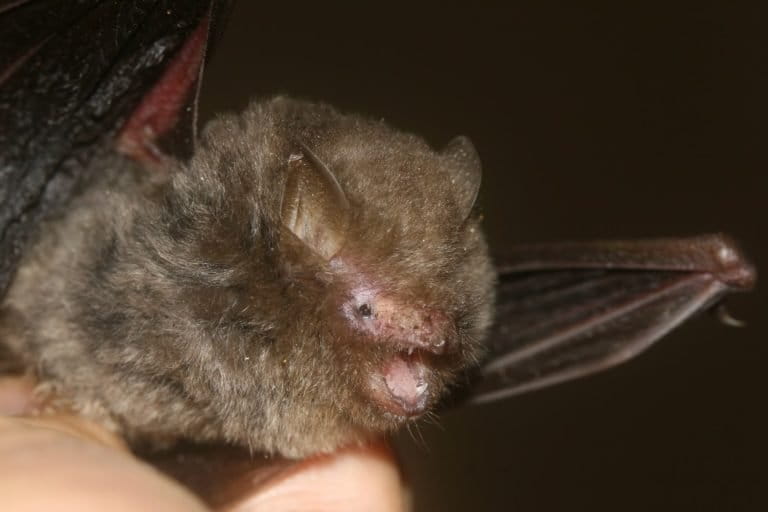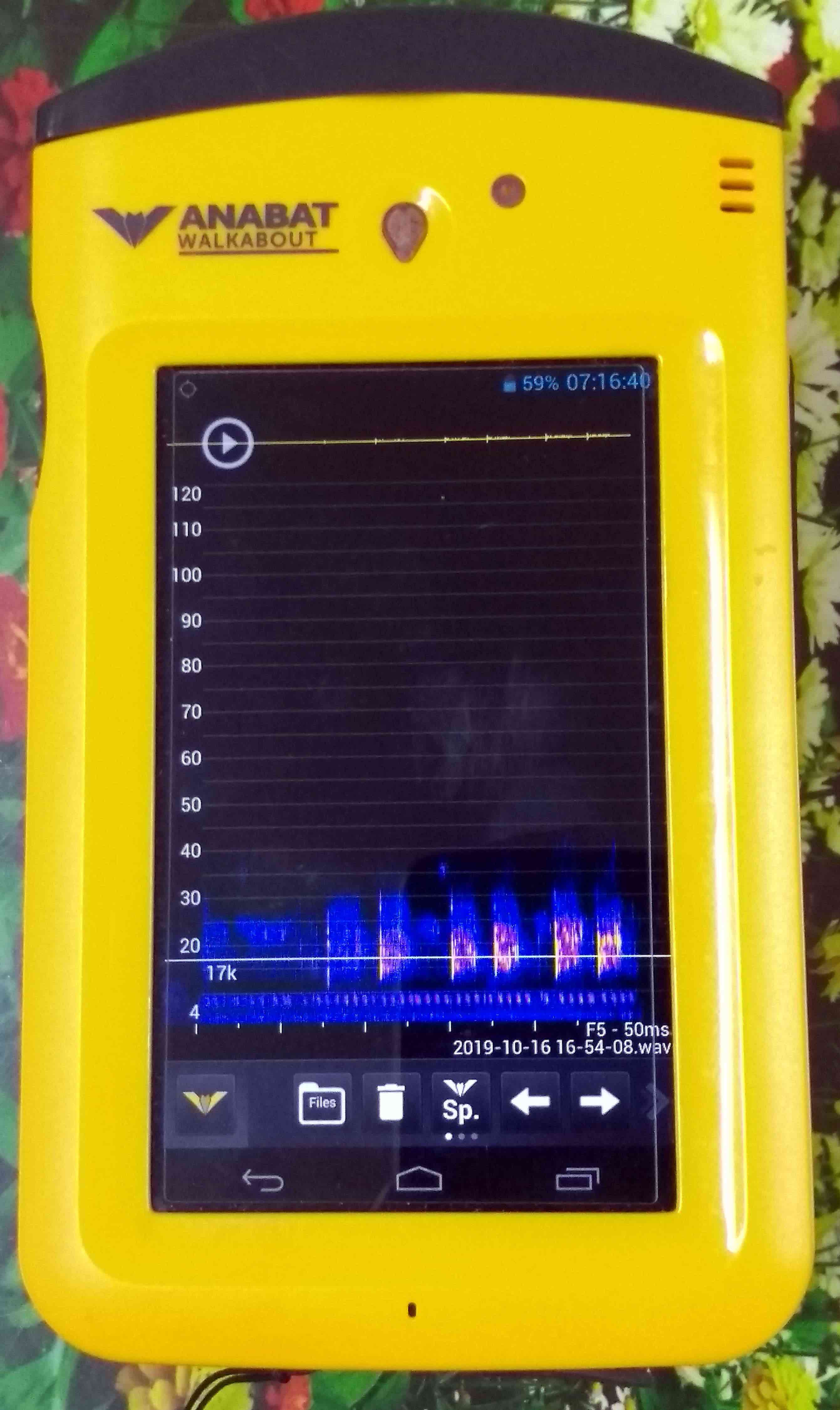- Details on taxonomy, distribution, and ecology of fiver poorly known bat species from Meghalaya have been published by researchers. Echolocation call data have been recorded for three species.
- Researchers in India are trying to build reference libraries for bat echolocation call data. Acoustic surveys can aid in monitoring species.
- Batting (recording and detecting echolocation calls of bats) as a hobby has not caught on yet as birding.
Researchers documenting bat diversity in Meghalaya, the Indian state that harbours half of the recorded bat species in the country, have described details of five poorly known species. The researchers have also, for the first time, provided the echolocation call data of three of the shy and secretive species, which are not reported from any other parts of India yet.
In a study, Zoological Survey of India scientist Uttam Saikia, researcher Adora Thabah and Manuel Ruedi of the Natural History Museum of Geneva have elaborated on the taxonomy, distribution, and some aspects of the ecology of the five species of bats that are not very well known in India.
“In fact, the taxonomic data and echolocation call characters for three species are provided for the first time from India. Information on their taxonomy, distribution, and some aspects of ecology is particularly important in the context of the continued degradation of natural ecosystems that threatens the habitats for bats in Meghalaya,” said Saikia, adding acoustic surveys can also yield information valuable for monitoring of species.
The five bat species in Meghalaya’s cave systems and forests were examined mostly during the ‘Caving in the Abode of the Clouds‘ project (2011-2018), a multi-country initiative that aims to discover and describe the caves in the state in northeast India. The state’s network of karst caves is one of the longest in the world.
The species described are the light-grey Megaerops niphanae (Ratanaworabhan’s fruit bat), Myotis pilosus (Rickett’s big-footed Myotis), Kerivoula kachinensis (Kachin woolly bat), Miniopterus magnater (Western bent-winged bat) and Miniopterus pusillus (Nicobar long-fingered bat).
As many as 65 species of bats are recorded from Meghalaya so far and this number is also likely to increase to some extent with more attention and investigations.

“K. kachinensis, M. magnater, and M. pilosus are not been reported from any other parts of India yet except Meghalaya. Even for species like M. niphanae and M. pusillus that are known from some other parts of the country, taxonomic and biological information are lacking,” added Saikia.
For three of the species (Myotis pilosus, Miniopterus magnater and Kerivoula kachinensis), we recorded echolocation calls as well, said Saikia, adding that the study was aided by a taxonomic collaboration between ZSI and Natural History Museum, Geneva.
“Bats are known from most of the caves in Meghalaya and some caves harbour dense bat colonies containing thousands of individuals and also a number of poorly known species,” states book chapter co-authored by Saikia.
“Compared to other states of Northeast India, the bat fauna of Meghalaya is relatively better known. This is primarily because of the fact that the provincial British administration was based at Shillong, the headquarters of erstwhile Assam Province and naturalists under the patronage of the British government conducted extensive faunal surveys in the Khasi and Jaintia Hills area,” the chapter says.
Read more on caving for documenting bat diversity in Meghalaya
Saikia said cave systems such as those in Nongtrai, where many Myotis pilosus were observed cohabiting with other species, and Siju caves, that used to hold large populations of bats, mainly Eonycteris and Miniopterus, have been disturbed due to limestone mining activities. “During two recent visits (March 2017 and March 2018) we did not observe any large colonies of these bats (Eonycteris and Miniopterus),” the authors write in the study.
The Kachin woolly bat and Ratanaworabhan’s fruit bat, said Saikia, are principally dependent on forests and were spotted in forest patches with bamboo trees. A female fruit bat, for example, caught in the vicinity of a village in West Khasi Hills, and other bats, presumably from the same species were seen feeding on a fig tree Ficus racemosa on the bank of river Khri (Kulsi). The village is surrounded by mixed deciduous forests.

Batting yet to catch on like birding
Bats use echolocation to navigate and track food. They emit high-frequency sound pulses through their mouth or nose that are above the human hearing range. The sound waves emitted by bats bounce off objects and return to the bat’s ears that are fine-tuned to recognise their own unique calls. Bat echolocation is so sophisticated that these animals can even detect objects the width of a human hair.
“They can discern the size, shape, and texture of objects in their environment through echolocation,” said Saikia.
Not all bats echolocate (such as a majority of fruit-eating bats) but Saikia said one can monitor how echolocating species are faring by having a reference library for bat echolocation calls. The calls recorded for the three species are stepping stones to build up a database for echolocation calls for bat species of northeast India.
“If you know the call characters, then just with the help of a bat call recorder, you can have a good idea of the species present in an area. However, it gives no idea about the abundance of each species as individual calls can’t be distinguished through the detector,” Saikia pointed out.
Each bat has a unique echolocation call, which can be used to identify bat species. The echolocation calls can be recorded and analysed using bat detectors and software such as BatSound or Anabat Insight.
“For our database, recordings were done with an Anabat Walkabout bat detector working at a sampling rate of 500 kilo Hertz. The calls were later analysed using suitable software,” Saikia said. “Out of the five species we studied, four could echolocate: Myotis pilosus, Miniopterus magnater, Miniopterus pusillus and Kerivoula kachinensis. However, we could record calls for three.”
Call of Miniopterus magnater or the Western bent-winged bat. Audio by Manuel Ruedi.
Call of Myotis pilosus or Rickett’s big-footed Myotis. Audio by Manuel Ruedi.

“Acoustic monitoring can also be useful for bat species having priority conservation concern. In view of continued destruction and degradation of habitats, many of the bat species in India need urgent conservation action, but unfortunately, bats are not legally protected in India except for two species,” Saikia rued.
Indian Bat Conservation Research Unit’s Rahul Khanolkar, who has been involved in extensive surveys on bat diversity in the northern Western Ghats region along Karnataka, Maharashtra and Goa state, said the unit has recorded echolocation calls for 30 species from the region where habitat and land-use changes have imperiled the mammals.
“We are in the process of expanding the database. There are numerous challenges to creating a reference library for bat calls unlike for bird call data. Bird calls are audible, they are in the human range. But in the case of bats, specialised detectors are needed that are expensive. So people don’t tend to buy them so easily and because bats are nocturnal; people don’t prefer to study bats so ‘batting’ has not become a popular hobby like birding,” explained Khanolkar.
“Very few people in India have access to funds and the equipment required,” Khanolkar said. Additionally, attributing bat calls to the correct species requires taxonomic expertise.
Khanolkar said acoustic surveys can aid monitoring of bat diversity by looking at the frequency, structure and other characteristics of calls and matching the calls with those in the reference library. Monitoring is key to their protection and conservation which, for bats in India, is floundering, said researchers.
Echoing Saikia, Khanolkar added: “Even under India’s Wildlife Protection Act, only two species (Wroughton’s free-tailed bat and Salim Ali’s fruit bat) are under Schedule 1. So there is no such protection unless they are in protected areas.”

CITATION
Saikia, U., Thabah, A., & Ruedi, M. (2020). Taxonomic and ecological notes on some poorly known bats (Mammalia: Chiroptera) from Meghalaya, India. Journal of Threatened Taxa, 12(3), 15311-15325.
Banner image: Myotis pilosus or Rickett’s big-footed Myotis. Photo by Manuel Ruedi.
